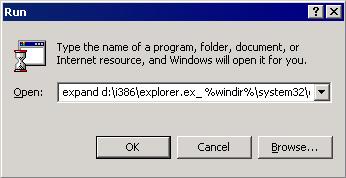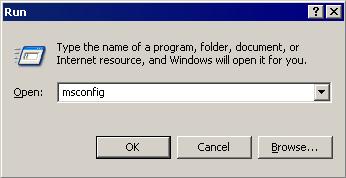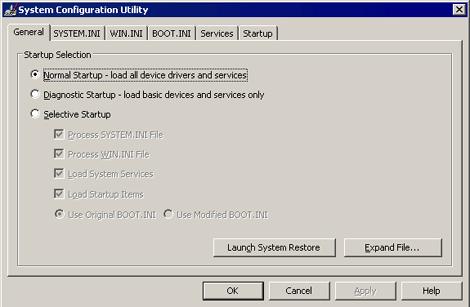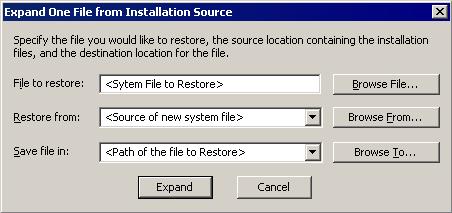TrojanSpy.Win32.GOLROTED.S
Trojan-Dropper.Win32.Scrop.vmd(Kaspersky); TrojanSpy:MSIL/Keylog(Microsoft)
Windows


Threat Type: Trojan Spy
Destructiveness: No
Encrypted:
In the wild: Yes
OVERVIEW
Dropped by other malware, Downloaded from the Internet
This Trojan Spy arrives on a system as a file dropped by other malware or as a file downloaded unknowingly by users when visiting malicious sites.
It steals sensitive information such as user names and passwords related to certain games. It logs a user's keystrokes to steal information.
TECHNICAL DETAILS
1,601,544 bytes
EXE
Yes
05 Jun 2019
Drops files, Collects system information, Steals information
Arrival Details
This Trojan Spy arrives on a system as a file dropped by other malware or as a file downloaded unknowingly by users when visiting malicious sites.
Installation
This Trojan Spy drops the following files:
- %Application Data%/WinMgmt/AuthFWizFwk.exe
- %User Startup%/pcalua.vbs → executed the dropped file AuthFWizFwk.exe
- %User Temp%/Tar{4 random characters}.tmp <- temporary encrypted config file, deleted afterwards
(Note: %Application Data% is the current user's Application Data folder, which is usually C:\Documents and Settings\{user name}\Application Data on Windows 2000(32-bit), XP, and Server 2003(32-bit), or C:\Users\{user name}\AppData\Roaming on Windows Vista, 7, 8, 8.1, 2008(64-bit), 2012(64-bit) and 10(64-bit).. %User Startup% is the current user's Startup folder, which is usually C:\Windows\Profiles\{user name}\Start Menu\Programs\Startup on Windows 98 and ME, C:\WINNT\Profiles\{user name}\Start Menu\Programs\Startup on Windows NT, C:\Documents and Settings\{User name}\Start Menu\Programs\Startup on Windows 2003(32-bit), XP and 2000(32-bit), or C:\Users\{user name}\AppData\Roaming\Microsoft\Windows\Start Menu\Programs\Startup on Windows Vista, 7, 8, 8.1, 2008(64-bit), 2012(64-bit), 10(64-bit).. %User Temp% is the current user's Temp folder, which is usually C:\Documents and Settings\{user name}\Local Settings\Temp on Windows 2000(32-bit), XP, and Server 2003(32-bit), or C:\Users\{user name}\AppData\Local\Temp on Windows Vista, 7, 8, 8.1, 2008(64-bit), 2012(64-bit) and 10(64-bit).)
It adds the following processes:
- cmd.exe /C TASKKILL /F /IM wscript.exe
- cmd.exe /C TASKKILL /F /IM cmd.exe
- "%Windows%\Microsoft.NET\Framework\v2.0.50727\vbc.exe" /stext "%User Temp%\tmp6D31.tmp"
- %Windows%\Microsoft.NET\Framework\v2.0.50727\RegSvcs.exe
(Note: %User Temp% is the current user's Temp folder, which is usually C:\Documents and Settings\{user name}\Local Settings\Temp on Windows 2000(32-bit), XP, and Server 2003(32-bit), or C:\Users\{user name}\AppData\Local\Temp on Windows Vista, 7, 8, 8.1, 2008(64-bit), 2012(64-bit) and 10(64-bit).)
It creates the following folders:
- %Application Data%\WinMgmt
(Note: %Application Data% is the current user's Application Data folder, which is usually C:\Documents and Settings\{user name}\Application Data on Windows 2000(32-bit), XP, and Server 2003(32-bit), or C:\Users\{user name}\AppData\Roaming on Windows Vista, 7, 8, 8.1, 2008(64-bit), 2012(64-bit) and 10(64-bit).)
Information Theft
This Trojan Spy steals sensitive information such as user names and passwords related to the following games:
- Minecraft
It gathers the following data:
- Computer name
- Local Date and Time
- Installed Language
- Operating System Platform
- Operating System Version
- Key logs
- Clipboard logs
- Language
- .NET framework Installed
- System Privilege
- Default Browser
- List of installed AV products
- List of installed Firewall
- Internal IP
- External IP
It attempts to steal stored account information used in the following installed File Transfer Protocol (FTP) clients or file manager software:
- FileZilla
- CoreFTP
It attempts to steal stored email credentials from the following:
- Thunderbird
- Eudora
- Internet Account Manager
- MS Outlook
- Outlook Express
- Group Mail Free
- IncrediMail
- Windows Mail
- Windows Live Mail
- Yahoo! Mail
- Gmail
It attempts to get stored information such as user names, passwords, and hostnames from the following browsers:
- Firefox
- SeaMonkey
- YandexBrowser
- Vivaldi
- Chrome
- Chromium
- Opera
- Internet Explorer
- Apple Safari
- Opera
It logs a user's keystrokes to steal information.
Stolen Information
This Trojan Spy sends the data it gathers to the following email addresses via SMTP:
- {BLOCKED}t@spytector.com
Other Details
This Trojan Spy does the following:
- It adds the following Image File Execution Options to prevent certain AV related files from executing:
- HKEY_LOCAL_MACHINE\Software\Microsoft\Windows NT\CurrentVersion\Image File Execution Options\{AV related file}
- Debugger = "rundll32.exe"
Where {AV related file} can be any of the following:- rstrui.exe
- AvastSvc.exe
- avconfig.exe
- AvastUI.exe
- avscan.exe
- instup.exe
- mbam.exe
- mbamgui.exe
- mbampt.exe
- mbamscheduler.exe
- mbamservice.exe
- hijackthis.exe
- spybotsd.exe
- ccuac.exe
- avcenter.exe
- avguard.exe
- avgnt.exe
- avgui.exe
- avgcsrvx.exe
- avgidsagent.exe
- avgrsx.exe
- avgwdsvc.exe
- egui.exe
- zlclient.exe
- bdagent.exe
- keyscrambler.exe
- avp.exe
- wireshark.exe
- ComboFix.exe
- MSASCui.exe
- MpCmdRun.exe
- msseces.exe
- MsMpEng.exe
- It terminates itself if the following files are present in the system:
- vmtoolsd.exe
- vbox.exe
- Windbg.exe
- SbieDll.dll
- Injects malicious code to the following files:
- C:\Windows\Microsoft.NET\Framework\v2.0.50727\RegSvcs.exe
- C:\Windows\Microsoft.NET\Framework\v4.0.30319\RegSvcs.exe
- Credentials of the mail that all stolen information are sent:
Email: {BLOCKED}t@spytector.com
Password: {BLOCKED}er123@!
SOLUTION
9.850
15.156.03
06 Jun 2019
15.157.00
07 Jun 2019
Step 1
Before doing any scans, Windows 7, Windows 8, Windows 8.1, and Windows 10 users must disable System Restore to allow full scanning of their computers.
Step 2
Note that not all files, folders, and registry keys and entries are installed on your computer during this malware's/spyware's/grayware's execution. This may be due to incomplete installation or other operating system conditions. If you do not find the same files/folders/registry information, please proceed to the next step.
Step 3
Restart in Safe Mode
Step 4
Search and delete this folder
- %Application Data%/WinMgmt
Step 5
Search and delete these files
- %Application Data%/WinMgmt/AuthFWizFwk.exe
- %User Startup%/pcalua.vbs → executed the dropped file
- %User Temp%/Tar{4 random characters}.tmp
Step 6
Delete this registry value
Important: Editing the Windows Registry incorrectly can lead to irreversible system malfunction. Please do this step only if you know how or you can ask assistance from your system administrator. Else, check this Microsoft article first before modifying your computer's registry.
In HKEY_LOCAL_MACHINE\Software\Microsoft\Windows NT\CurrentVersion\Image File Execution OptionsWhere {AV related file} can be any of the following:
Step 7
Restart in normal mode and scan your computer with your Trend Micro product for files detected as TrojanSpy.Win32.GOLROTED.S. If the detected files have already been cleaned, deleted, or quarantined by your Trend Micro product, no further step is required. You may opt to simply delete the quarantined files. Please check this Knowledge Base page for more information.
Step 8
Restore a file/s that has/have been corrupted/modified by this malware/grayware
To restore system files:
• For Windows 2000:
- Insert your Windows 2000 Installation CD in your CD-ROM drive.
- Click Start>Run.
- In the Open text box, type the following then click OK:
expand D:\i386\{file to restore}.ex_ %windir%\system32\{file to restore}.exe
• For Windows XP and Windows Server 2003:
- Click Start>Run.
- In the Open text box, type the following then click OK:
MSCONFIG - Make sure that the option Normal startup - load all device drivers and services option is selected.
- Click the Expand button.
- In the dialog box that appears, type the following:
- File to restore contains the path and file name of the file you wish to restore.
- Restore from contains the path to the Windows CAB files. This path may vary from machine to machine. It may be in a local drive, in a network drive, or in a CD-ROM. In the local drive, it is usually in C:\WINDOWS\OPTIONS\INSTALL.
- Save file in contains the path of the file you wish to restore (Do not include the file name).
- Click the Expand button.
Did this description help? Tell us how we did.






